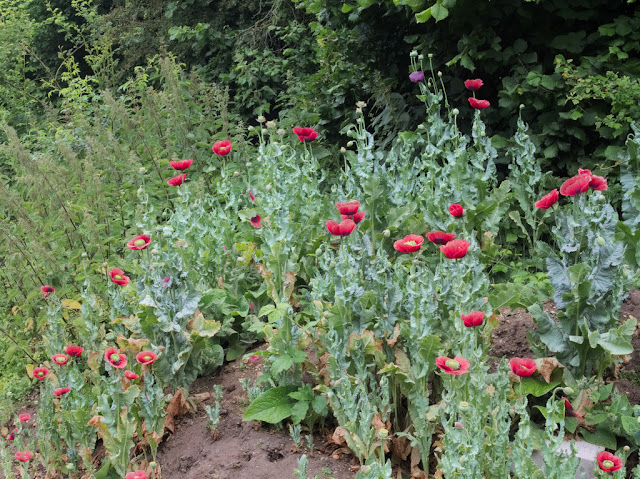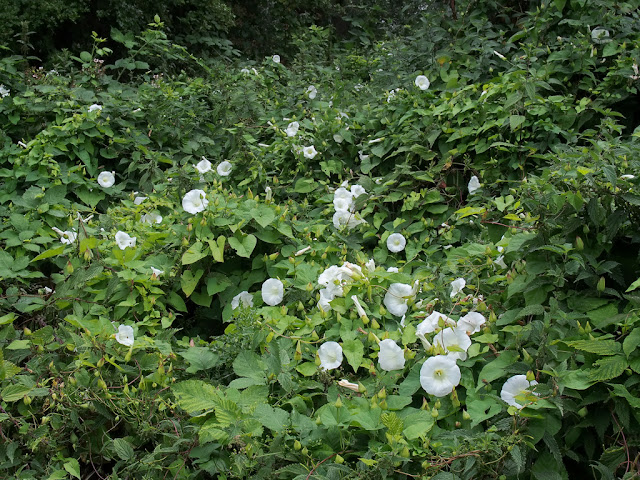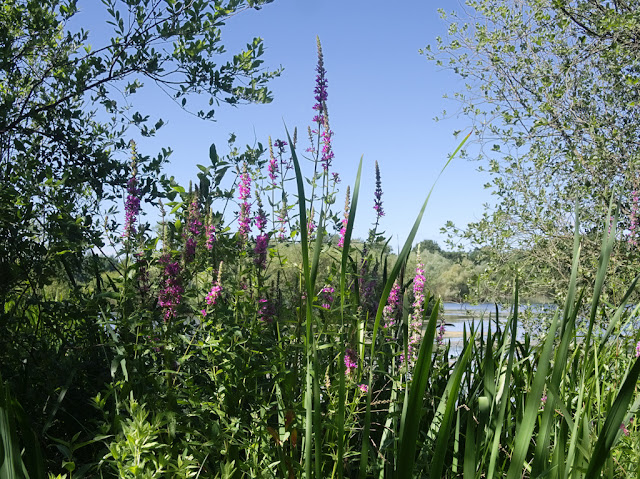In this post, I return to two issues that have cropped up a number of times previously: short lived flowers and the unreliability of my memory.
 |
| Access Road - 24 June 2015 |
I start the post with one of those surprises that turn up from time to time: a stand of poppies. These were growing on the access road at the southern edge of the park.
Brambles
 |
| North Side of Park - 29 June 2015 |
A lot of the brambles in the park are in the wooded areas, where they stifle everything but do not flower at all. Elsewhere the biggest single concentration of these bushes is at the north end of the park where this photograph was taken.
Unreliable Memory or Different Years?
 |
| Edge of Deep Water - 15 July 2015 |
 |
| Dickerson's Pit - 21 July 2015 |
In a different way, my expectation was faulty with regard to purple loosestrife. I remembered a lot of it in the park, but at first there did not seem to be much about. However, as time has gone on, more and more has appeared, and accumulated, as unlike the bramble, the flowers remain colourful for quite a while. This picture of purple loosestrife was taken in almost exactly the same spot as I photographed yellow irises earlier in the year (see post 1 August - After the May Flower ) - in fact you can see the iris leaves in the picture.
 |
| 13th Public Drain - 30 June 2015 |
Ragwort
 |
| Path to Fen Road Exit - 15 July 2015 |
NEXT: Fruitful Promise
No comments:
Post a Comment